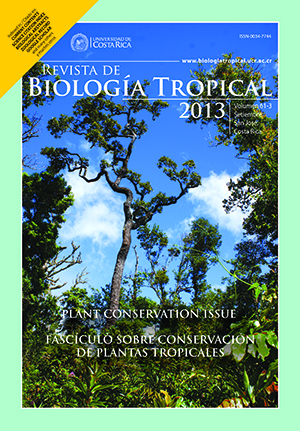Abstract
Fish biodiversity of aquatic ecosystems is highly threatened by different economic activities driven by human populations, and its description is increasingly a priority. For the Cauca-Magdalena River system we have described 14 species, and the purpose of this paper was to describe three new species belonging to the same genus Hemibrycon from the Nare and Guatapé River drainages of the middle Magdalena River, Colombia. The description was based on a series of 200 specimens, and the use of morphometric, meristic and osteological characters, as well as fish distribution and morphogeometric analytical methods. We have found that Hemibrycon fasciatus n. sp. (n=54) differs from other species of Hemibrycon (that also have a vertical humeral spot) in having: melanophores outlining the posterior margins of the scales along sides of body; humeral spot extending onto posterior margin of opercle; a dark lateral stripe, formed by deep pigment that is continuous with the peduncular spot; the toothed portion of the maxilla not reaching the dorsal margin of the dentary (vs. toothed portion of maxilla extending beyond dorsal margin of dentary); all maxillary teeth tricuspid (vs. some unicuspid teeth present on maxilla). H. cardalensis n. sp. (n=64) differs in having: a vertically elongate humeral spot that extends one or two scales below the lateral line canal. H. cardalensis n. sp. differs from all congeners in having the pigment of the caudal spot restricted to the ventral half of the caudal peduncle, and in having melanophores around the anterior scales of the lateral line. Hemibrycon antioquiae n. sp. (n=82) differs in having a circular humeral spot. It differs from the other species with a circular humeral spot, like H. mikrostiktos, in having a projection of disperse melanophores extending from the dorsal margin of the humeral spot to below the lateral stripe. Habitat data and environmental impacts caused by the construction of reservoirs for hydroelectric projects and other threats in the area are included, as well as a key to all species Hemibrycon present in the Magdalena River Basin. The synonymy of H. pautensis with H. polyodon is discussed and H. pautensis is revalidated.##plugins.facebook.comentarios##
Downloads
Download data is not yet available.






